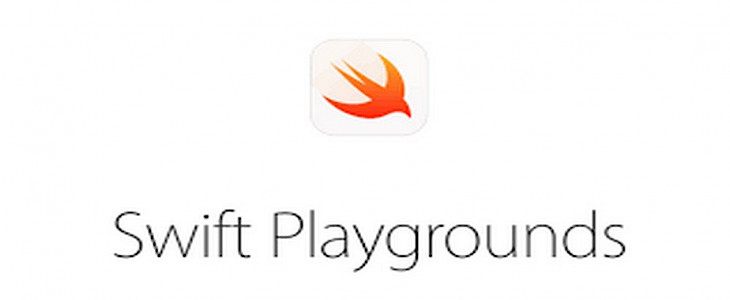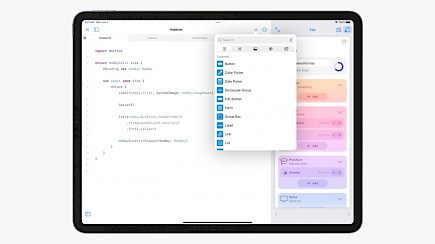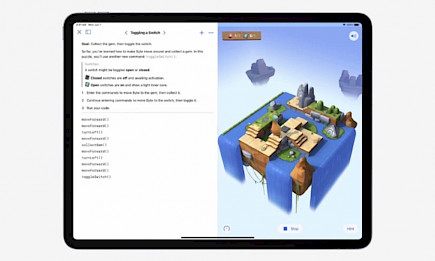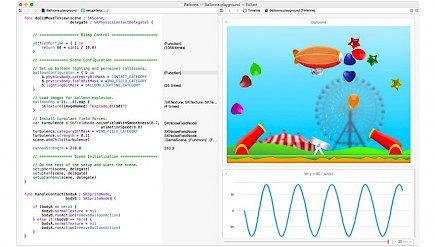
The Swift Playground has been an important yet, not the most popular feature of iPadOS for a long time now.
As you can guess from the name itself, Swift Playground is a specially designed programming terminal that can run complex Swift bytecodes with ease. And with the new iPadOS 15 update, this old-timer(Swift Playground) has got a new avatar.
The news:
Apple's latest iPad Pro is the company's most powerful tablet to date. In the run-up to WWDC 2021, a lot of readers had lengthy lists of things we hoped we'd finally have Multiuser support, a more powerful Files application with the native version of Final Cut and Photoshop, greater compatibility with an external display.
We didn't see all of the features we'd hoped for. But we did get quite a surprise: Apple has announced Swift Playgrounds 4, the most recent version of the company's Swift Playgrounds sandbox. A program that Apple SVP Craig Federighi claims will provide "a whole new dimension of productivity to the iPad."

It was a brief announcement that was difficult to overlook amid the multitude of new tools on the stage. Developers say that it will dramatically reduce the entry barrier for the new generation of iOS developers. It could also hint at even more thrilling iPad features that are to be added in the future.
Swift Playgrounds isn't a new application. It's been accessible to users of the iPad for a long time and recently made it to macOS too. However, in the past, it's been primarily an educational app targeted towards youngsters. It introduces beginners to Swift by way of a fun and fun series of puzzles. It hasn't, in the past, been viewed as an actual tool for developing applications.

However, Swift Playgrounds 4 is the first version of Swift Playgrounds that could function as a stand-alone development tool. As a result, there are a few new features that aid in the creation of more straightforward applications. For instance, you can see live previews for the application you're creating in the upper right-hand corner of your screen while you work on it, which will change when you alter the code.

It's possible to run the app in full-screen mode to test it as well. But the most important thing to note is that not only are you able to create apps using Swift Playgrounds 4. But when the update becomes available in the coming months, you'll be able to upload your apps directly into the App Store from within Swift Playgrounds.
This is significant since it allows developers to avoid the long and complicated procedure currently used for the distribution of software. Apps that are part of the Apple ecosystem aren't developed using Swift Playgrounds or even anything as colorful and fun in their design. Instead, they're mostly developed and distributed using Xcode, which is a huge and complex application which only works on Macs. It's known to be a challenge to master.
Additionally, the process of transferring an app developed on Xcode to the App Store includes many steps. Variety of processes and requires an account for developers, additional software to be installed as well as a plethora of images, videos as well as graphics and other objects to upload to Apple's platform known as App Store Connect.
It's a hurdle for developers who are new to the field. However, Application Store Connect is difficult for professionals as well. According to Matt Weinberg, the co-founder of the digital company Happy Cog. He has been developing apps for more than 15 years.
Want to learn the basics of Swift? Then, click "here"
The history of Swift playground
The Swift Playgrounds application was unveiled on the 13th of June, 2016, at WWDC 2016. It was announced as an iPad exclusive application designed to assist those who are learning to code using the Apple Swift programming language. A beta version designed for Apple developers was launched on the same date, which was followed by the public beta version in the month following. The application was marketed as a learning tool for students. It introduced the basic ideas of programming using an interactive experience designed specifically for the use of touch.

The name of the app is a reference to Xcode's previous Playgrounds feature, which was launched in 2014. Alongside iOS 10, the app was officially launched on September 13th, 2016. Apple also released a curriculum guide that recommended the iPad application for middle school students and beyond. Then, in January of 2018, Apple introduced subscriptions to the iPad application, which allows users to join playgrounds created by third-party developers.
On the 11th of February, 2020, Apple made an announcement of the macOS version of Swift Playgrounds on the Mac App Store to be developed using the Apple Catalyst technology. Later versions of the application support both iPadOS as well as macOS, with the majority of the Apple curriculum being available for both platforms. Apple provided a session for WWDC 2020 that instructs third-party developers about how to support both platforms in their subscriptions.
Winding-up
One of the features that didn't garner a deserved amount of attention at the time of its announcement, Swift Playgrounds 4, would allow you to use your iPad to build applications that work on Apple's mobiles. The apps can be uploaded for approval to the App Store. We have provided information regarding the Swift Playgrounds.
We hope you all loved reading this article. You are all caught up. Stay tuned for new content.





